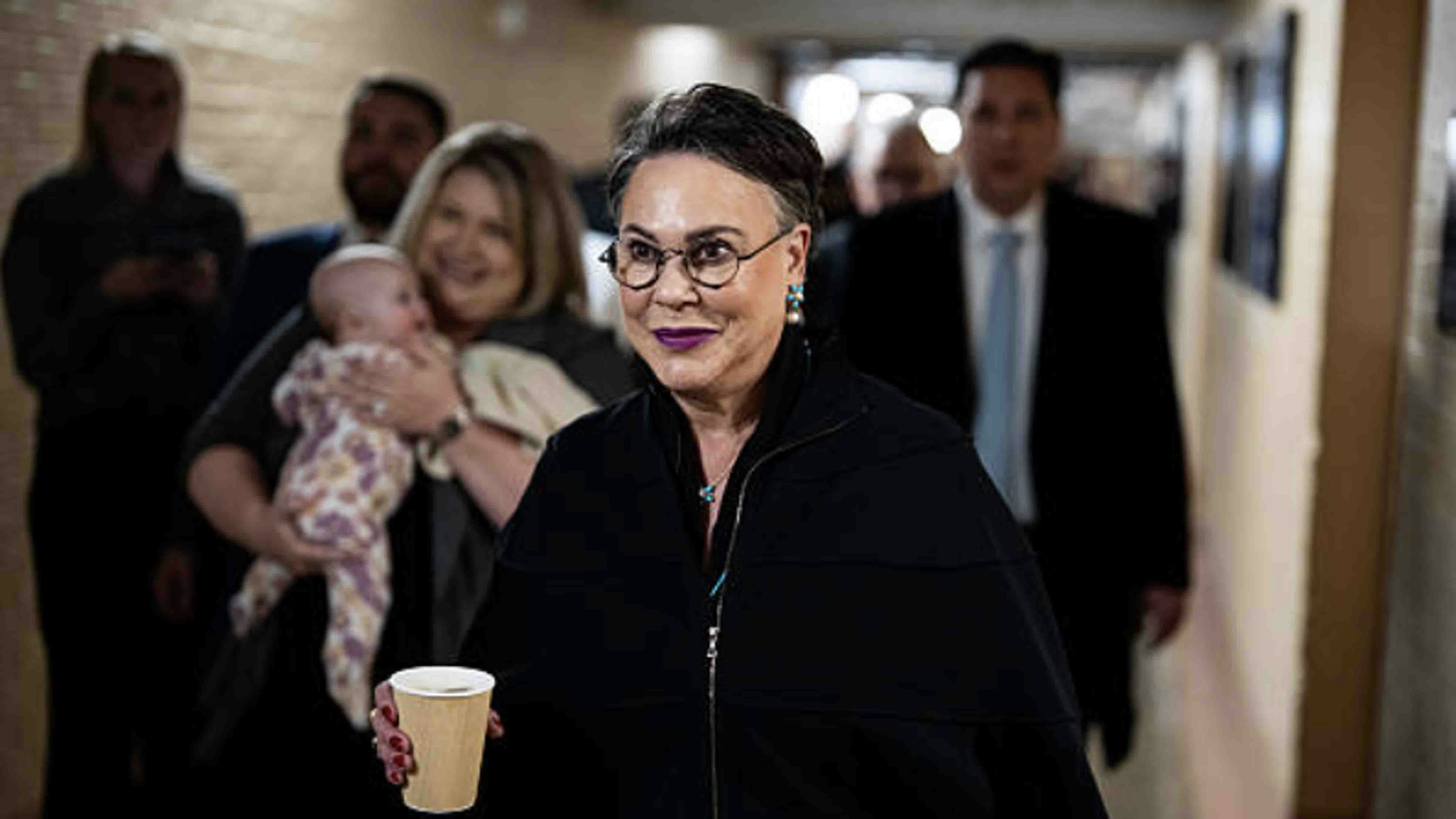Media access at the Wyoming Capitol in some ways has been declining for a number of years.
A new proposal coming before the Legislature’s Management Council next month would continue that trend if passed, prohibiting photo and video journalists from entering the halls that run next to the House and Senate floors.
Although it may seem like an insignificant proposal on face value, photojournalists consistently use these halls during the legislative sessions to capture photos and video of lawmakers as they conduct business in the People’s house.
State Sen. Cale Case, R-Lander, said giving photojournalists access to the halls is as important as giving field-side access to photographers to shoot a football game rather than having them take photos from the bleachers.
Making the Legislature as easy as possible to engage with and understand, Case said, should always be a top priority. He recalled a legendary photo that was taken of him speaking, where former state legislator Bruce Burns can be seen in the background clutching his head in his hands in disapproval. He said this photo spoke 1,000 words in a way that a grainy YouTube video never could.
“There’s so much emotion to that,” he said.
Why The Change?
House Speaker Albert Sommers, R-Pinedale, said he helped initiate the proposal with Senate President Ogden Driskill, R-Devils Tower, to restrict access for a few reasons.
The biggest was privacy for lawmakers. Sommers said the hallways serve as a valuable space for lawmakers to conduct private conversations about legislation being considered, and a place the press doesn’t belong. When considering the improvements that have been made to public access, Sommers believes there wouldn’t be an infringement on freedom of the press by enacting the restriction.
“That space out there is the only place legislators can really talk,” he said. “It needs to be more private.
“I don’t think the media needs access to the only place legislators can have those private conversations.”
Sommers also mentioned that a formal complaint had been filed on a member of the press during the last legislative session for their conduct in one of these hallways, which also influenced his bringing forward the proposal. He would not share who the complaint was filed on.

Press Reaction
Longtime former Wyoming Press Association attorney Bruce Moats told Cowboy State Daily he finds the proposal concerning.
Moats’ nephew AAron Ontiveroz is a photojournalist for The Denver Post and prior to that worked for the Powell Tribune and Wyoming Tribune Eagle. While with the Tribune Eagle, Ontiveroz photographed the Legislature.
“The photographs he and others took of the legislators in action helped tell the story,” Moats said.
Overall, public access to the Legislature has increased in recent years due to the fact that nearly every moment of the legislative sessions and interim committee meetings is now streamed online on YouTube and Zoom.
But in-person press access has decidedly declined, which Moats and Case see as an act of actually driving the public and transparency away.
Moats also discounts the video access improvements made of late, pointing out that the Legislature manages these video platforms and that many people are too busy to watch the videos anyway.
“The Legislature continues to gain more and more control over what information comes out of the process that results in the laws that governs our lives,” Moats said. “As a person with 45 years of observing, as a journalist and then an attorney, that mischief often flourishes behind closed doors, this scares me.”
The Wyoming Press Association agrees.
“It has been the role of the fourth estate to report on the work being done for the people of Wyoming by their legislators,” Darcie Hoffland, executive director of the WPA said in a statement on behalf of her organization. “To limit or revoke access sets a dangerous precedent not only for the Wyoming Legislature itself, but for local government agencies to follow suit. Additionally, restricting access for members of the media will only serve to increase the divide between the elected and their electors.”
Case brought up how reporters were previously given access to sit at a table on the floor of the House and Senate with lawmakers as recently as less than 10 years ago. At some point this privilege was revoked to give more space to the Legislature’s staff.
In addition, the press room at the Legislature was previously located right outside the two chambers. With the expansion of the Capitol about six years ago, this room was moved to the basement of the Capitol, much closer to the committee meeting rooms but significantly farther from the legislative chambers where bills face the more critical final approval.
What’s Next?
The proposal advanced on a 4-2 vote at the Select Committee on Legislative Facilities, Technology and Process’ meeting in September, and will be considered at the Management Council’s next meeting on Nov. 11.
Sommers said he doesn’t adamantly support the proposal himself and could be swayed into reconsidering it.
“I haven’t locked in my mind yet,” he said. “If there’s lots of good testimony, I may change my mind.”
The November Management Council meeting will be the last held under the current legislative leadership. When the Council convenes again in January, there will be a new House Speaker and Senate President in charge of selecting members of the next Council, which could theoretically scrap the changes made at the meeting just two months prior.
“They could reverse that decision, whatever decision it is,” Sommers said.
How They Voted
Voting in support of the proposal to restrict access were Sens. Dan Laursen, R-Powell, and Chris Rothfuss, D-Laramie; and Reps. Dalton Banks, R-Cowley, and Dan Zwonitzer, R-Cheyenne. Voting against it were Case and Rep. Mike Yin, D-Jackson.
Leo Wolfson can be reached at leo@cowboystatedaily.com.





